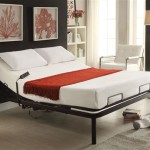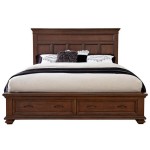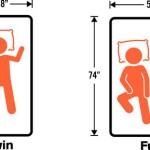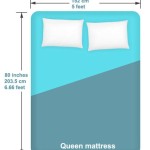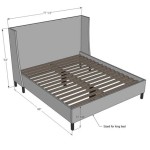Converting A Crib Into A Full-Size Bed: A Comprehensive Guide
As children grow, so too must their sleeping arrangements. The transition from a crib to a larger bed is a significant milestone, often necessitating a full-size bed. In many cases, a convertible crib can be adapted, offering a cost-effective and space-saving solution compared to purchasing an entirely new bed. This article outlines the process of converting a crib into a full-size bed, covering the necessary steps, required hardware, potential challenges, and important safety considerations.
Convertible cribs are designed with modularity in mind, intended to evolve with the child's needs. These cribs typically offer several configurations, transitioning from a standard crib to a toddler bed, daybed, and ultimately, a full-size bed. The conversion process varies depending on the specific crib model, but generally involves disassembling the crib, removing the side rails, and attaching conversion rails to support a full-size mattress.
Understanding Crib Conversion Kits
A crucial aspect of converting a crib into a full-size bed is the conversion kit. These kits are specifically designed for individual crib models and typically include the necessary side rails, slats, and hardware required for the conversion. It is imperative to obtain the correct conversion kit for the specific crib model to ensure proper fit and structural integrity. Using the wrong kit, or attempting to fabricate makeshift rails, can compromise the bed's safety and stability.
Information regarding the appropriate conversion kit can usually be found in the crib's instruction manual or on the manufacturer's website. If the manual is unavailable, contacting the manufacturer directly with the crib's model number is the best course of action. Ensure the conversion kit is certified by a reputable organization, indicating it meets established safety standards.
Before purchasing a conversion kit, carefully inspect the components for any defects or damage. Verify that all necessary hardware, such as screws, bolts, and brackets, are included. If any parts are missing or damaged, contact the retailer or manufacturer for replacements before proceeding with the conversion.
Step-by-Step Conversion Process
The conversion process generally involves these steps. First, detach the mattress and dismantle the crib. Consult the crib's instruction manual for specific disassembly instructions. This typically involves removing screws and bolts that secure the crib's components, such as the front rail, back rail, side panels, and mattress support.
Next, remove the crib's existing side rails, if applicable. Some convertible cribs may require the removal of additional hardware or components depending on the specific model. Refer to the instruction manual for detailed guidance.
Attach the conversion rails to the headboard and footboard of the crib. The conversion kit will provide specific instructions on how to properly secure the rails. Ensure that the rails are aligned correctly and securely fastened to provide adequate support for the mattress. Use the provided hardware and tools to tighten all connections.
Install the mattress support slats. These slats are essential for providing a stable and level surface for the mattress. Distribute the slats evenly across the frame and securely attach them to the side rails using the provided hardware. Ensure that the slats are evenly spaced and adequately supported to prevent sagging or uneven weight distribution.
Finally, place the full-size mattress onto the supported frame. Verify that the mattress fits snugly within the frame, with no significant gaps between the mattress and the side rails. This ensures that the child cannot become trapped between the mattress and the frame. Ensure the mattress is of appropriate thickness as recommended by the crib and conversion kit manufacturers.
Important Considerations and Potential Challenges
Several key considerations must be addressed during the conversion process. Safety should be the paramount concern. All hardware must be securely tightened to prevent the bed from collapsing or becoming unstable. Regularly inspect the bed for loose screws or bolts and tighten them as needed.
Ensure that the mattress is appropriate for the age and weight of the child. A mattress that is too soft may not provide adequate support, while a mattress that is too firm may be uncomfortable. Consult with a pediatrician or sleep specialist for recommendations on the most suitable mattress for the child's needs. The overall height of the bed, including the mattress, should be carefully considered, particularly for younger children. A bed that is too high may pose a risk of falls.
Prepare for potential challenges that may arise during the conversion process. Missing or damaged hardware is a common issue. Before starting the conversion, thoroughly inspect all components and contact the retailer or manufacturer for replacements if necessary. Difficulty understanding the instructions is another potential challenge. If the instructions are unclear or confusing, seek assistance from the manufacturer or consult online resources for clarification. Stripped screws or damaged threads can occur during assembly. Use caution when tightening screws and bolts to avoid stripping the threads. If a screw becomes stripped, use a screw extractor to remove it and replace it with a new one.
Paint chipping or damage to the crib's finish can also occur during the conversion process. Protect the surrounding area with drop cloths or blankets to prevent damage to flooring or furniture. Use touch-up paint to repair any chips or scratches in the finish. A common challenge involves compatibility issues. Unexpectedly, a conversion kit may not be fully compatible, even if it’s marked that it should be. This might be due to variations in manufacturing runs or slight modifications to the crib design. This emphasizes the importance of carefully comparing the model number of the kit with the crib's specifications and contacting the manufacturer if any doubts arise.
Furthermore, the structural integrity of the converted bed relies on the quality of the original crib. If the crib has sustained significant damage or wear over time, the conversion may not be advisable. Weakened joints or compromised wood can compromise the bed's stability and safety.
The age of the child also significantly impacts the decision-making process. While a full-size bed offers more space and longevity, it may not be suitable for toddlers who are prone to rolling or falling out of bed. Consider using bed rails or other safety measures to prevent falls and ensure the child's safety. For older children, the transition to a full-size bed may be more seamless, but it's still important to provide proper guidance and support during the adjustment period. Explain the new sleeping arrangements to the child and address any concerns or anxieties they may have.
Ensuring Safety and Stability
The most critical aspect of converting a crib is ensuring the resulting bed is safe and stable. Before allowing a child to sleep in the converted bed, thoroughly inspect all connections and components to verify they are securely fastened. Shake the bed vigorously to test its stability. If any wobbling or instability is detected, re-tighten the hardware and inspect the frame for any signs of damage. The conversion should be done on a level surface. Uneven flooring can cause instability in the bed. If the floor is uneven, use shims to level the bed and prevent wobbling.
Use bed rails to prevent falls, especially for younger children transitioning to a full-size bed. Bed rails provide a barrier that prevents the child from rolling out of bed during sleep. Choose bed rails that are specifically designed for use with full-size beds and ensure they are securely attached to the frame. Regularly inspect the bed rails for any signs of damage or wear and replace them as needed.
Consider placing a soft rug or carpet around the bed to cushion any falls. This can help to minimize the risk of injury if the child does fall out of bed. Avoid placing the bed near windows or other potential hazards. Keep the area around the bed clear of clutter and obstacles to prevent tripping or falls. Educate the child about the safety rules for the new bed. Explain the importance of not jumping on the bed or playing near the edges. Supervise the child closely during the initial transition period to ensure they adjust safely and comfortably to the new sleeping arrangement.
Ultimately, converting a crib into a full-size bed can be a viable and cost-effective option for families seeking to upgrade their child's sleeping arrangements. However, it's crucial to approach the process with careful planning, attention to detail, and a strong focus on safety. By following the steps outlined in this guide and addressing potential challenges proactively, the conversion can be completed successfully, providing a comfortable and secure sleeping environment for the growing child. Thorough research into the specific crib model and conversion kit, coupled with a commitment to following instructions meticulously, will contribute significantly to a positive and safe conversion experience.

Diy Crib To Bed Conversion

How To Convert A Crib Into Full Size Bed

Full Size Conversion Kit Bed Rails For Ozlo Baby Cribs

Everything You Need To Know About Crib Conversion A Children S Bed With Very Little Time Energy Simply September

Davinci Hidden Hardware Twin Full Size Bed Conversion Kit In Slate

Oxford Baby Full Bed Conversion Kit For Harper 4 In 1 Convertible Crib Snow White Wal Com

Twin Full Size Bed Conversion Kit M4799

Everything You Need To Know About Crib Conversion A Children S Bed With Very Little Time Energy Simply September

How To Convert Your Kingsley Crib A Full Size Bed Assembly Instructions

Everything You Need To Know About Crib Conversion A Children S Bed With Very Little Time Energy Simply September

